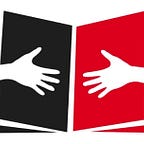The line between life and death: The HIV Epidemic
By: Zahraa Saab
“To have the HIV virus is to have crossed the line between life and death.” This is how Jamaica Kincaid begins to describe her brother’s battle with HIV/AIDS in her 1996 novel, “My Brother”. Long estranged from her brother Devon, Kincaid re-enters his life upon his AIDS diagnosis and attempts to come to terms with the reality of being HIV-positive in a low-income country like Antigua, where HIV medicine is “too expensive to be stocked” or unaffordable for those who require it. Kincaid, who is an affluent American citizen, was able to pay for her brother’s HIV care, placing him at an advantage over the other 26 million people living with HIV who were unable to access the costly treatment.
At the time of Devon’s diagnosis, antiretroviral therapy for HIV was relatively new and out of reach for patients from impoverished communities. Partners in Health (PIH) launched an HIV Equity Initiative in 1998 to address this injustice by providing HIV positive Haitians with free HIV treatment that prolonged their lives. The initiative was funded through awareness campaigns held by PIH’s co-founder, Dr. Paul Farmer, who sought out any means to bring AIDS treatment to his poor patients. Publications regarding the success of the initiative encouraged international investment in HIV interventions, making ART more affordable, and in turn, accessible. In this way, Partners in Health played a key role in the movement towards free coverage of ART, which continues to be used by 20.9 million HIV positive people worldwide today.
The World Health Organization reports that as of 2017, 36.7 million people live with HIV: a disease that disproportionately affects individuals living in low and middle-income countries, and has been dubbed one of “the greatest health challenges of our time”. HIV is a virus that is passed through the exchange of bodily fluids through behaviors such as sexual activity, injecting drug use, or breastfeeding. When it infects an individual, it weakens their immune system and makes them susceptible to a number of other life-threatening diseases such as cancer or tuberculosis. If left untreated, the virus progresses to its most severe stage, acquired immunodeficiency syndrome (AIDS), which can ultimately lead to death.
Currently, ART is the first line of treatment against HIV, since it slows the replication of the virus. In doing so, an infected individual’s immune system is able to strengthen itself, and the likelihood that it will be transmitted from one individual to another, especially from mother to child, is greatly reduced. For this reason, governments of developing and developed nations have pushed for universal free access to HIV care. This has led to the ART coverage of around 19.5 million people, 77% of which are low-income pregnant or breastfeeding mothers. Generally, women bear the greatest portion of the HIV burden, as they are often victims of gender inequality and lack the social or economic means to prevent the acquisition of HIV. Low-income women are often financially dependent on their male partners, who may abuse their power and limit a woman’s ability to enforce choices regarding sexual behavior, including condom use, abstinence, or multiple partnerships. Intimate partner violence in the form of physical, emotional, or sexual violence that is inflicted by a partner or spouse , also places women at greater risk of acquiring HIV since women may fear violent backlash from their partners if they refuse sex or insist on condom use. Many times, individuals may not have access to condoms because they are unavailable or unaffordable, and education regarding safe sexual practices is sparse, placing women at an even greater disadvantage.
National HIV guidelines have started to encourage modes of prevention that target the root causes of the HIV epidemic through education, social support, and financial efforts. Mass communication campaigns like Nigeria’s VISION project are one such example, whereby TV, radio and print advertisements regarding HIV prevention reached up to 59% of the general population. Worldwide, MTV followed suit, launching the “Staying Alive” prevention campaign in 166 countries, encouraging conversations about HIV amongst young people. HIV testing and counseling has also proven to be an effective mode of HIV prevention, especially for mothers-to-be. Partners in Health has long been engaged in these on-the ground efforts, especially in developing nations such as Haiti, where women’s literacy and AIDS prevention programs were found to reduce the rate of HIV transmission from mothers to babies to 4%, which was half the current rate in the United States. Likewise, PIH successfully launched an HIV treatment program in rural districts of Rwanda that was highly praised for its feasibility and its ability to target the financial, biological, and societal causes of HIV. Today, Partners in Health continues to actively provide HIV positive patients with financial aid and connects patients to community health workers who help them manage their illness.
Through efforts that have reduced barriers to HIV care, HIV related-deaths have substantially dropped in the past decade, especially due to ART. However, 1.8 million new HIV infections still arise each year, signaling that even more has to be done to raise awareness and funding for treatment if HIV is to be eliminated by the year 2030, as the United Nations Sustainable Development Goals Agenda hopes to achieve. Not every HIV infected individual has a Dr. Paul Farmer or Jamaica Kincaid in their life, but so long as organizations like Partners in Health continue to provide at-risk communities with access to medication, HIV support groups, and HIV education programs, one should remain hopeful of an end to the epidemic. Though having the HIV virus was likened to standing between life and death, we now know that an HIV-infected person can remain on the side of life much, much longer than what was once expected. That, in and of itself, is enough of a reason to keep “fighting the good fight” against HIV.
